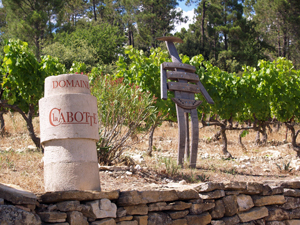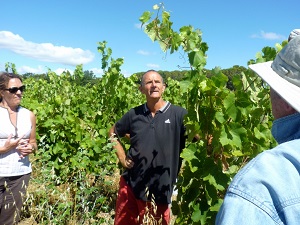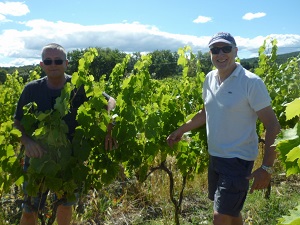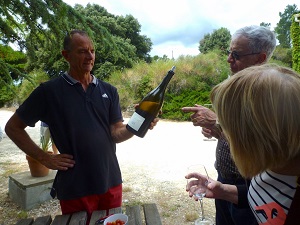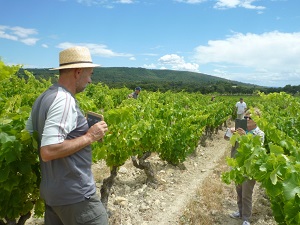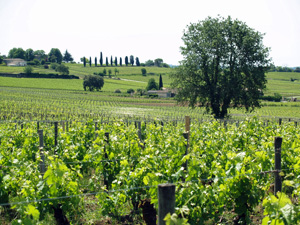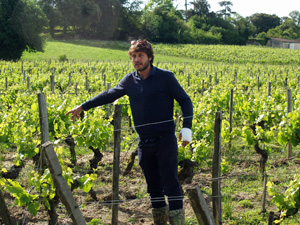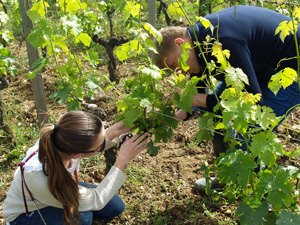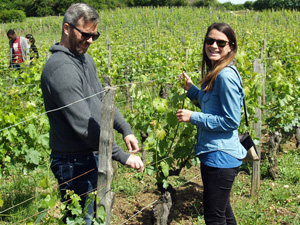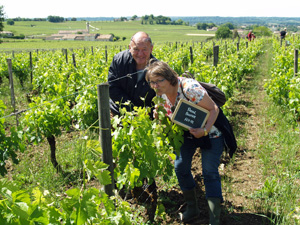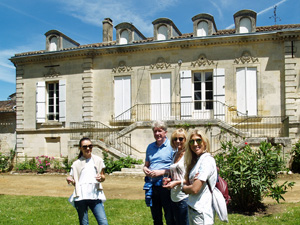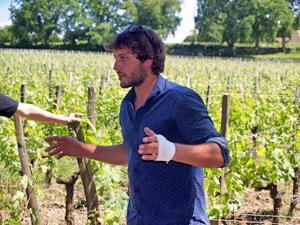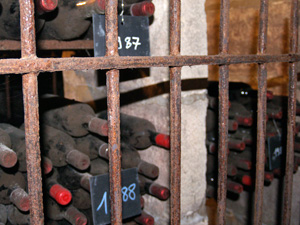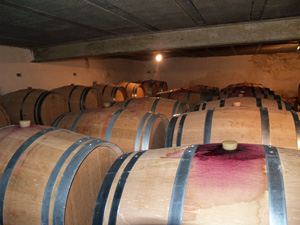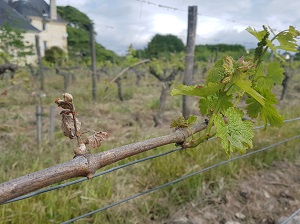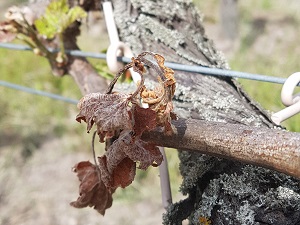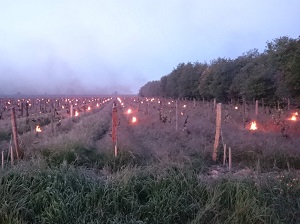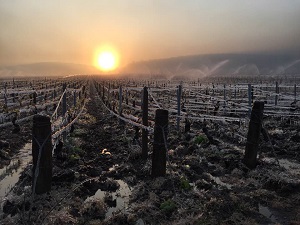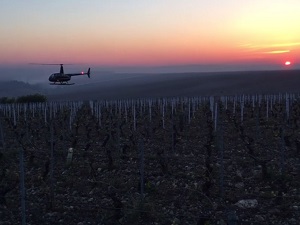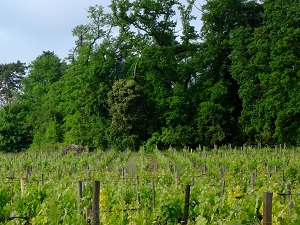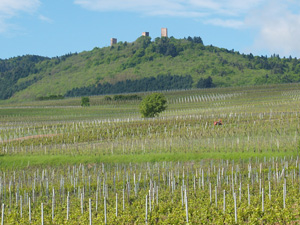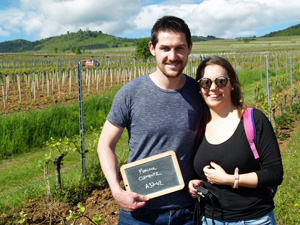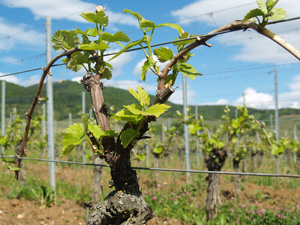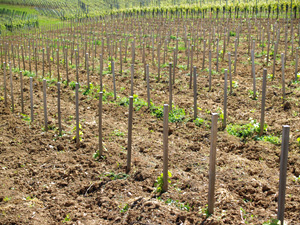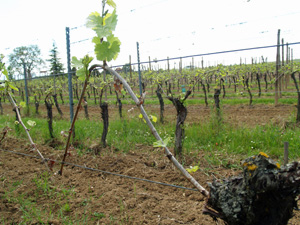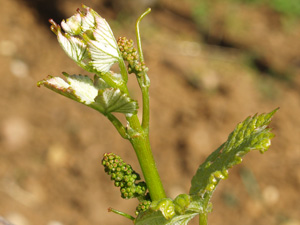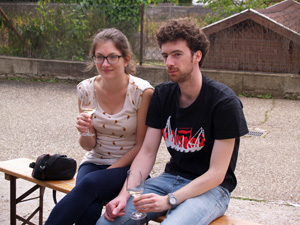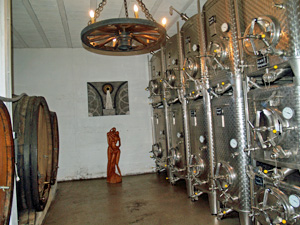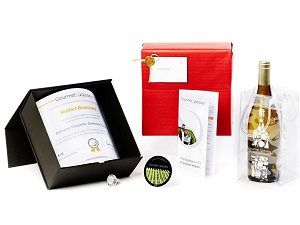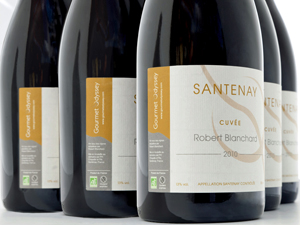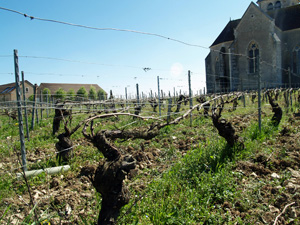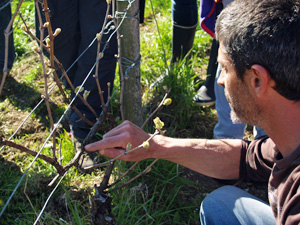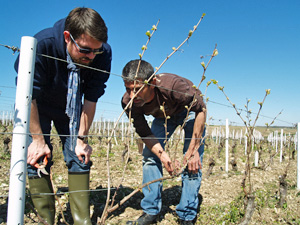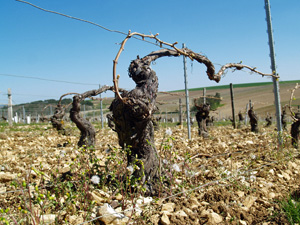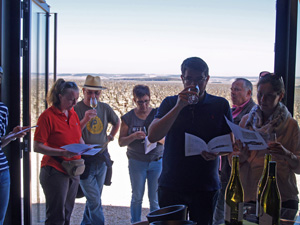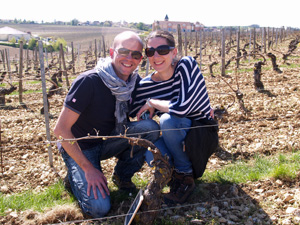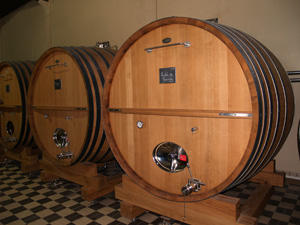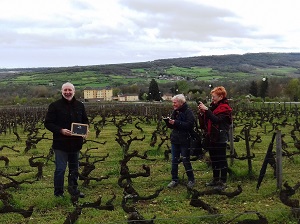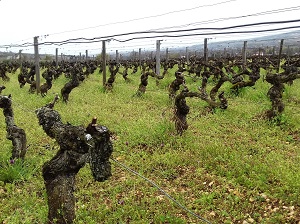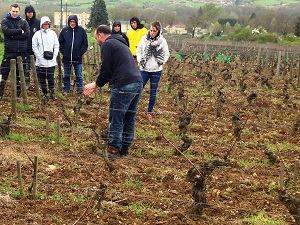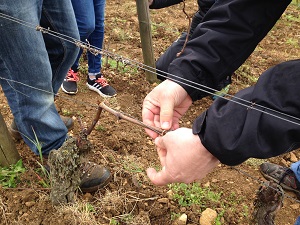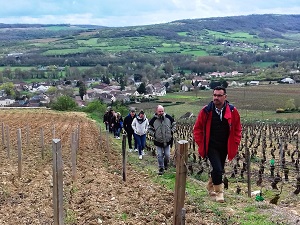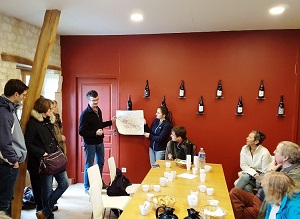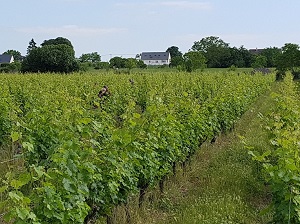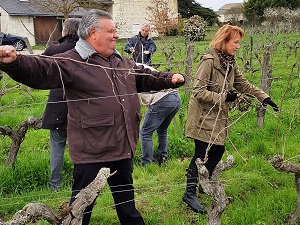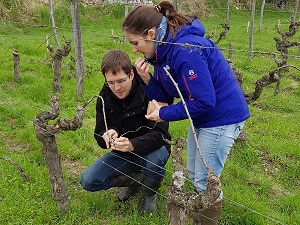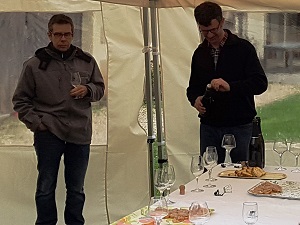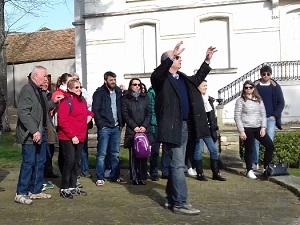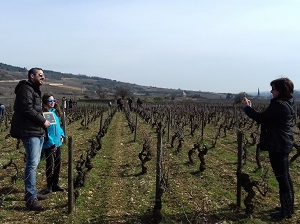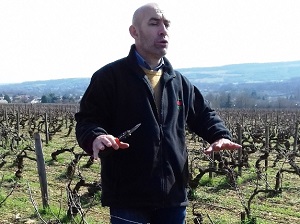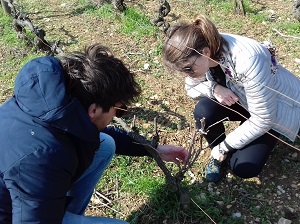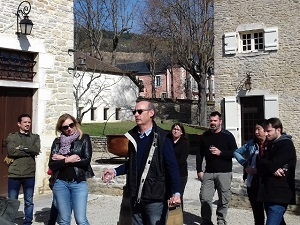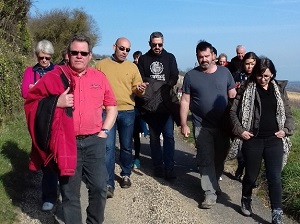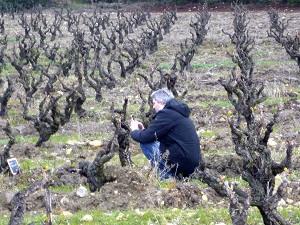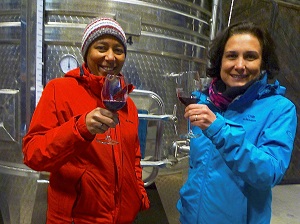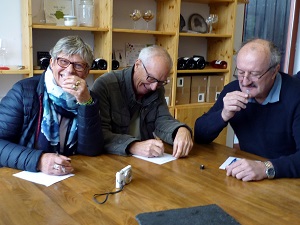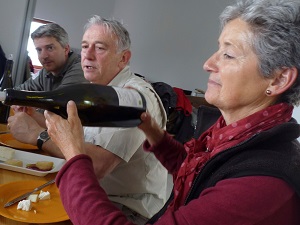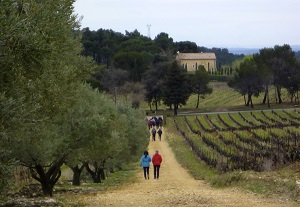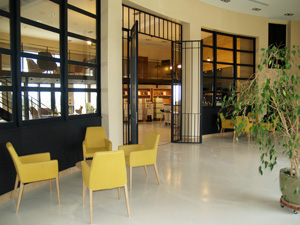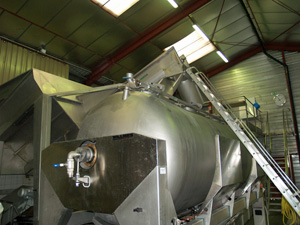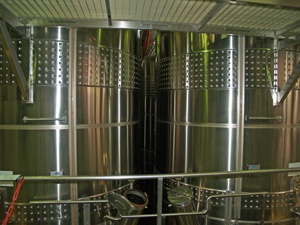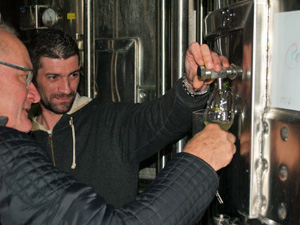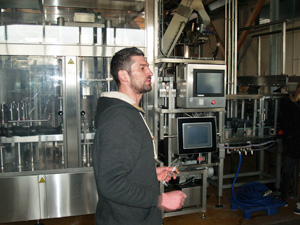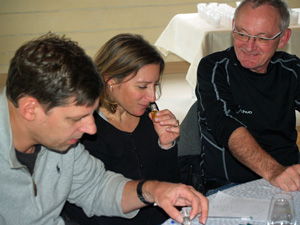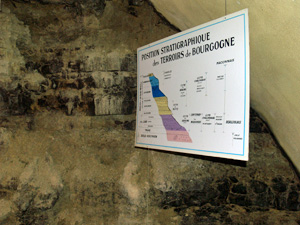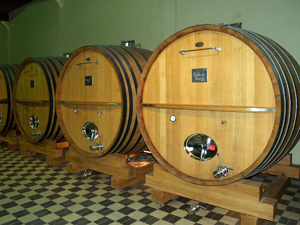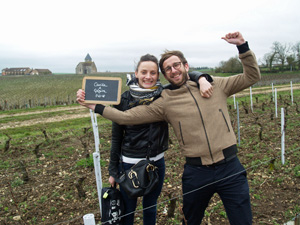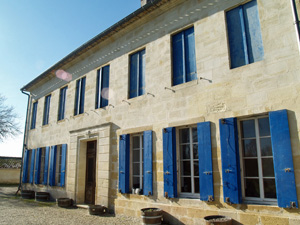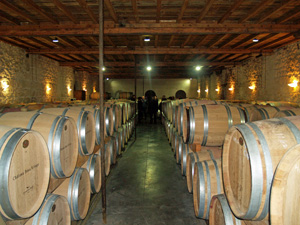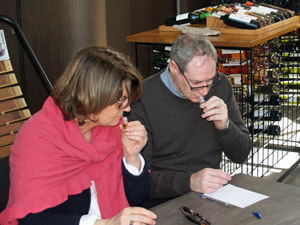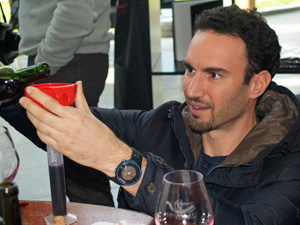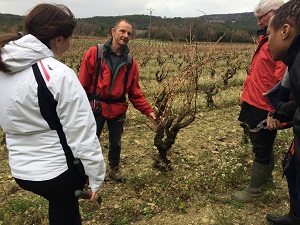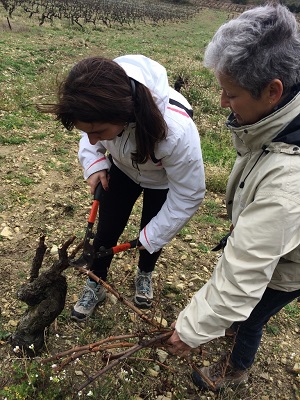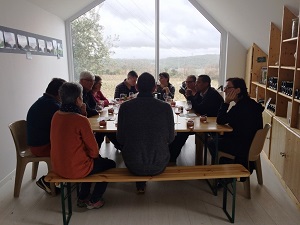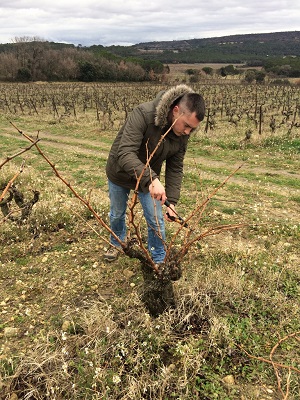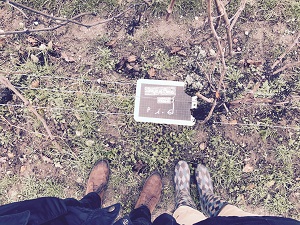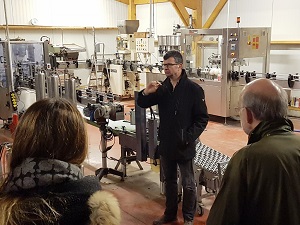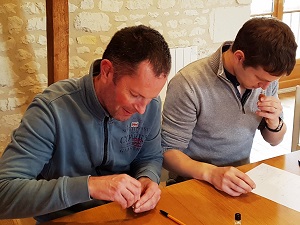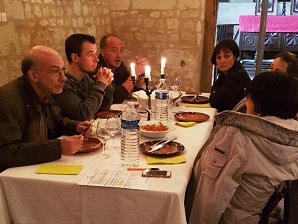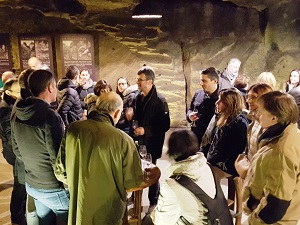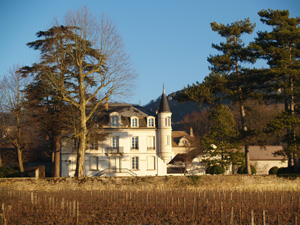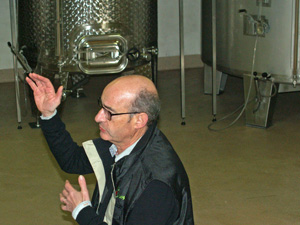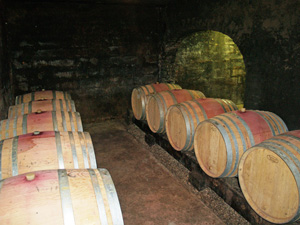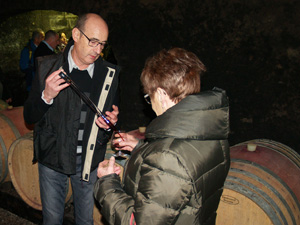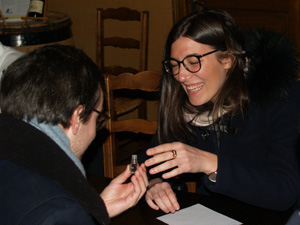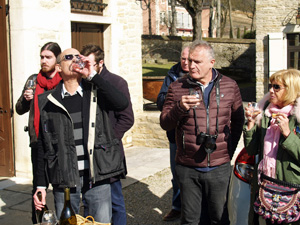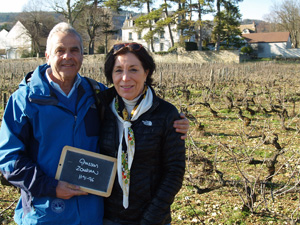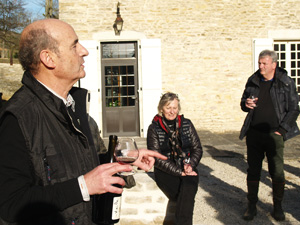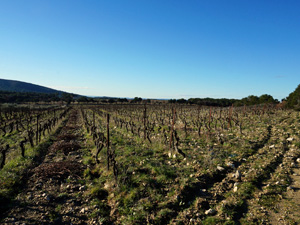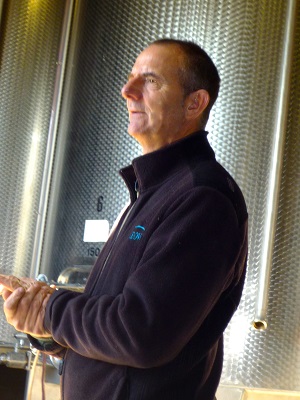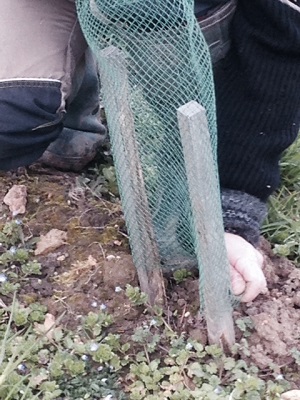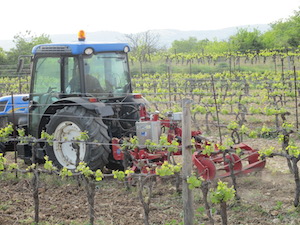Blending wine is a fine art as we were to learn during the Vinification Experience Days at Château Beau Rivage last weekend. The winemaker chooses not only which grape varietals to use and in what percentages, but also chooses between different lots of the same wine, and notably at Château Beau Rivage, between the same wine aged in different types of oak barrel. The possibilities are endless!
After the introductions, we headed into the cuvier, or fermentation hall, to see where the grapes end their journey at harvest time. Here we learnt all about the fermentation process to transform the sugar contained in the grapes into alcohol, and the work carried out to extract the tannins from the marc of grape skins and pips during maceration. The first weeks after the harvest is a very busy time for the winemaker as the wines need to be constantly monitored to track the temperature, sugar content, and evolution of the wines.
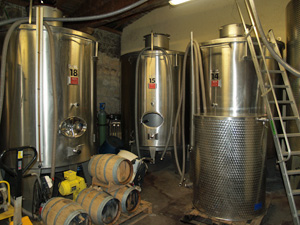
Once the fermentation has finished, the wines are racked to separate the wine from the larger lee particles that are formed by the skin, pips, stems and other solid matter. If it was left in contact with the wine, this would make the wine unstable and give undesirable aromas. The wine that is drawn off is known as the “vin de goutte”. The marc that remains in the bottom of the vat is then pressed to obtain the “vin de presse”, which is then aged separately to have another possibility during blending. The vin de presse is much more tannic and concentrated than the vin de goutte.
At Château Beau Rivage, the wines remain in the vats until the malo-lactic fermentation has finished, a process which reduces the acidity and results in a softening of the wines. The wines are then moved into the barrel room.
The barrel room at Château Beau Rivage is very impressive. Chrsitine, the owner and winemaker comes from a family of coopers, and the family cooperage is just the other side of the village. Here we were introduced to the influence that oak barrels play in ageing wine, and learnt about the different effects they have on the wine depending on the provenance of the oak and the way in which the barrels are made. Barrel making is an art form in itself!
For the most part the wines are left alone in the barrel to age. This takes time as the wines at Château Beau Rivage are made for lasting. Each barrel is regularly tasted to check on its progression, and any wine that has evaporated is replaced to keep the barrels full, protecting the wine from the oxygen in the air. After tasting, the winemaker will decide whether the finer lees that are present in the barrels need stirring in a process known as “battonage”.
It was then time to put our senses to the test. At the cooperage, a series of workshops had been set up, the first of which was to identify some of the aromas that can be found in wine due to the grape varietal or from the ageing process in oak barrels. A fun exercise that’s not as easy as you would imagine!
Now that we had the vocabulary in place, we started the first wine tasting session of the day. We were served two different wines, and had to try and guess the singular difference between them. Were they from different grape varietals, different years, or had they been aged in different types of container? The difference aromatically and on the palate was striking, and tasting in this manner is the best way to understand the variables that a winemaker has at his or her disposal.
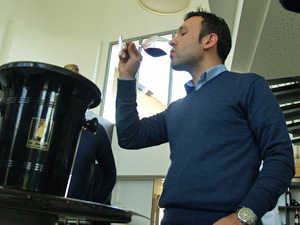
Lunchtime was approaching and so we tasted some of the winery’s wines during lunch at the restaurant of the cooperage. After the rosé wine, we tasted the Phare 2002 red wine with the foie gras and fig chutney starter. We then tasted the Benjamin Bordeaux Supérieur 2010 red wine with the main course, and the Clos la Bohème Haut-Médoc 2010 with cheese, followed by the Château Beau Rivage 2007 with the chocolate mousse. This last wine is the cuvée chosen at the winery for the Gourmet Odyssey Wine Experience gift pack.
After lunch, we had lots more wine tasting in store during the blending workshop. At our disposal were samples of four different grape varietals from the 2016 vintage that are currently still in the ageing process. To understand the different qualities of each, we started by tasting them individually. We noted that the merlot was full of fruit but not so long on the palate, the malbec brought a touch of spice, the cabernet sauvignon had a long finish, and the petit verdot had more acidity than the others.
Then it was time to have a go at blending the wines together. We tried several different blends to see how the wine changes with the different grape varietals and percentages used. Even small differences can considerably change a wine, and some of the blends were more pleasing than others! One thing that we were unanimous about was that it takes real skill to choose the blend, and to be able to project into the future about how the wine will be.
Many thanks to all who participated in this very enjoyable weekend and to Château Beau Rivage for giving us a great insight into the art of winemaking. We now have to wait patiently as the 2016 vintage slowly matures and is ready in the winter of 2018/19. The 2015 vintage will be ready at the end of this year, or beginning of next depending on its evolution over the next few months, and the timing of this year’s harvest.
